Indigenous queer elders: Stepping up for mob
By: Peter Waples-Crowe
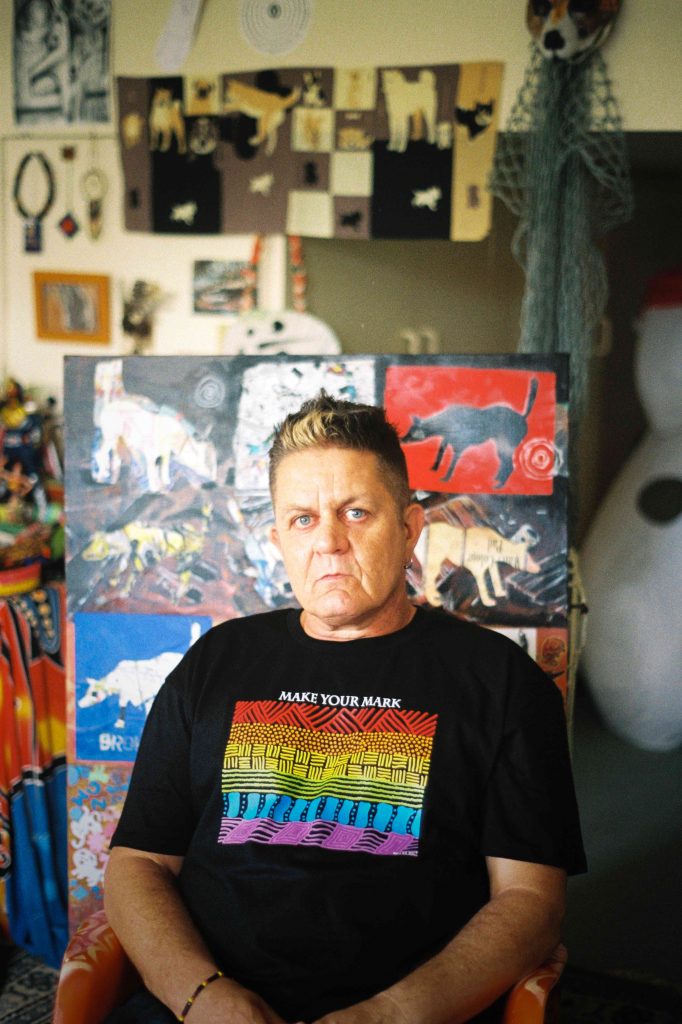
Now in his 50s, Peter Waples-Crowe is a powerhouse community figure in the Aboriginal LGBT community, managing a career in public health alongside a significant body of visual art that reflects his unique intersections. After catching up over cigarettes outside the State Library of Victoria, and reflecting on the sombre irony of smoking tobacco products and working in the community-health sector, he sat down with Archer Magazine co-editor Bobuq Sayed to chat about the history of queerness in Australia, Indigeneity, mental health, drug use and party culture.
I love the term ‘emerging’ when it comes to my eldership – it gets used a lot in visual arts and I am an emerging queer elder. I’m always asking myself to do better and looking around and asking community to see what that means.
A few years ago, I started getting called ‘Uncle’ or ‘Aunty’, and you just have to take that on because it’s a marker of respect. I really like it because it queers eldership up. It plays with the gender binary and I like to let that be, even though I’m cisgender.
You never think you’re going to make it to the position of elder, but that’s the thing, isn’t it. That role of elder is really important, and there’s a lot of wisdom that comes with it because it’s someone who has earned respect and worked for community. The elder’s seen as a strong figure among my Ngarigo mob and in the Koori community more widely, and in First Nations communities worldwide.
A lot of other people use the term nowadays, but I think they don’t realise it has such a specific cultural significance for Aboriginal people.
I grew up in a non-Indigenous family so, in my childhood, I first had to tackle self-identification.
Because I was adopted out, it didn’t come out till later that I was Indigenous. It was strange, though, because I had always done Indigenous artworks and I was always very attracted to Indigenous cultures as a young person. At that time, you weren’t allowed to access much from your records. I was told I was adopted, but kept in the dark about everything else.
The first thing was that I was queer, which was a big obstacle. I didn’t have any queer or Aboriginal role models around me back then. It wasn’t until much later that I realised I needed role models, and they were hard to find. All my life I’ve struggled with role models.

Image: Jade Florence
I grew up in a poor white community in housing commissions, in a pretty tough part of Wollongong, New South Wales. The only labels you ever heard were ‘poofter’, ‘dyke’ and ‘tranny’ – that was all you heard, and they were all negatives. From an early age, you internalized who you were to be a bad thing.
As a sensitive soul who thinks a lot, I took a lot of that on and I didn’t know how to process it.
The first signs of AIDS started to appear when I first left school at 18. Into the ’80s and ’90s, people were worried about you coming out, because they were genuinely afraid you were gonna get AIDS and die.
That was the backdrop of what coming out was like: there’s this new disease killing a lot of gay men, and there was a lot of poofter bashing, too, where groups of people went out and bashed gay people for sport. It was really tough, actually.
I had a queer friend early on, and we learnt to adapt in order to survive. I hid a lot of my stuff, though; I wasn’t free to express it. You learn to repress a lot of that shit. It wasn’t until much later that I was even able to start unpacking some of it. The world I want as an emerging queer elder is one of safety.
When I got to my 20s, I couldn’t take the weight of it all and I took off. I sold my belongings, started backpacking and barely knew where I was going, which is a luxury a lot of Aboriginal people don’t have.
I disappeared and went overseas. When I came back, I wasn’t the same person anymore. My whole coming-out experience happened really late and, when I returned, something had changed and I began my work with community.
I started working at the AIDS Council in Wollongong as a beat outreach worker – working with men who had sex with men in parks, toilets, car parks, beaches, stuff like that. I was trying to do HIV prevention and talk about the issues that weren’t getting any attention in the media.
At the time, we didn’t have any other places to hang, so these beats were where people met and got to know one another. They had a different role back then and they fed into stereotypes of gay men as sexual deviants, but that’s not what they were about. We were forced into the margins by the homophobic culture of the time and we found belonging there.
Back then, we clung together as a group for safety. What we fought for then is what’s happening now, where people are moving away from strictly gay and queer venues and you can hang with a diverse crowd of people.
But I think we live in a bubble in Melbourne. The other week, I went down to Gippsland and there’s still a lot of homophobia in the Aboriginal community, and in the general public as well. The marriage-equality vote may have helped in some ways, but the homophobia is still around.
For people of my age, living through the AIDS era, it’s hard not to be a bit scarred by internalised homophobia and the narrative that we deserved to die and that promiscuity was gonna kill us. I can’t even begin to describe what the fear of contracting AIDS did to my whole generation.
People used to think they’d have to move to find acceptance – that there’s the ghetto of Oxford Street in Sydney, or the ghetto of Commercial Road in Melbourne – but I really respect people who stay in their country towns and try to educate people from there.
And here I am, back working for the AIDS Council (but in Melbourne) – there’s so much more optimism now.
I was anrgy with the world for many reasons.
My Aboriginality only properly emerged in my mid-20s, when I met my mum for the first time and she told me we’re strong because of our blackfulla blood. I’ve been Indigenous all along; I was just disconnected temporarily.
But I wanted to know who I was and I was angry that they wouldn’t give me access to my adoption records. I wasn’t a happy teenager at all. All those experiences built up my vulnerability to the night-life, and I took to drug use like a duck takes to water, which I think I’m finally ready to talk about.
I was introduced to injecting drugs, amphetamines. For someone who was a bit sad and down by nature (which has since been diagnosed as type-II bipolar), I really loved what the amphetamines made me feel. I was confident and happy in myself, and using became a huge part of my life.
I worked with injecting drug users in Redfern, doing needle exchanges, but I was also one of them – a peer as well as working, which were roles I navigated. Heroin wasn’t for me, but its instant escapism had great appeal for people, including a lot of Aboriginal and queer people. It was the favourite drug of my partner at the time, Michael.
I did a lot of drugs back then and, in Sydney especially, I did a lot of partying. It just became a part of me.
It really peaked in the ’90s, with the high quality of ecstasy and the venues coming alive and anticipating the millennium. Everyone was loved up to the max on all sorts of drugs. We didn’t have phones, so we were always out. We met up at people’s houses and we took care of each other in a way that I don’t see so much anymore.
Unfortunately, later that decade, Michael died of AIDS. While I lost him, I did inherit a beautiful Canadian family.
I’m finished with the drugs and partying now, but I don’t want to make that seem like a ‘hero moment’ because that’s not what it’s like. I don’t judge people on the substances they use – but, for me and for my mental health, I had to move on.
It’s taken me a while to become comfortable with it all. My current partner has been a real rock for me while getting through some tough personal times. All these experiences I’ve had and the challenges I’ve overcome are part of my eldership now.
That was 20 big years of my life I spent using, and I partied all through those years. I was running away from myself; in some ways, I’m a classic case. Being altered gave me a break from myself and the world. I really struggled with coming to terms with being queer and being Aboriginal.
In Sydney in the ’90s, I hung out with a group of gay and lesbian friends and I could hardly find a space to go out in. The separatist politics were full-on. Gays hated lesbians, lesbians hated gays, men-only, women-only.
There are parts of that that are still around today, plus a lot of misogyny, transmisogyny and homonormativity that the community still needs to address. Especially for remote Aboriginal people, we’re seeing high rates of suicide, and we don’t know how much of that can be attributed to being LGBT.
Intergenerational talk is so important, to remind people that where we’re at now is not where we’ve always been.
One of the hard parts about being a gay Aboriginal person is gaining trust. I moved around a lot – I lived in Newcastle and Sydney, and worked in the Northern Rivers. Each time, you had to build up relationships with that community, and not being straight made it harder because the cultures can be pretty macho.
Working in the Aboriginal community requires time and a lot of trust. If the Aboriginal health services aren’t working for us Aboriginal LGBT people, then we need queer spaces to be servicing us better. When a lot of the organisations trying to help Aboriginal people and queer mob have a history of failing these communities, it’s hard to rebuild that trust.
We’ve got a bit of a way to go, and it’s my role as an emerging queer elder to talk and try to bring our communities together.
I‘ve always been curious. I’d ask people where gay Aboriginals fit in before colonisation. I got told we were raised as girls, or that we were respected, and I’m not sure where the truth of it is.
I think we were erased, and it’s hard to find reference to us because it was all written by colonisers and framed using that lens. We weren’t writing it for ourselves. You can imagine how different variations of sexualities and genders wouldn’t have been looked at kindly by the coloniser.
We know more about First Nations genders elsewhere in the world, but things are only starting to emerge from here and I think that will help us combat the Anthony Mundines of our world who spread vile homophobia about us not belonging in the culture.
Another school of thought is that gayness came with colonisation – that it’s only a white phenomenon and that it never existed here naturally. We know that’s not true; we know we’ve been here since the beginning of time. Always was, always will be, Aboriginal queer mob (that’s a phrase that I’m gonna use in an upcoming artwork!).
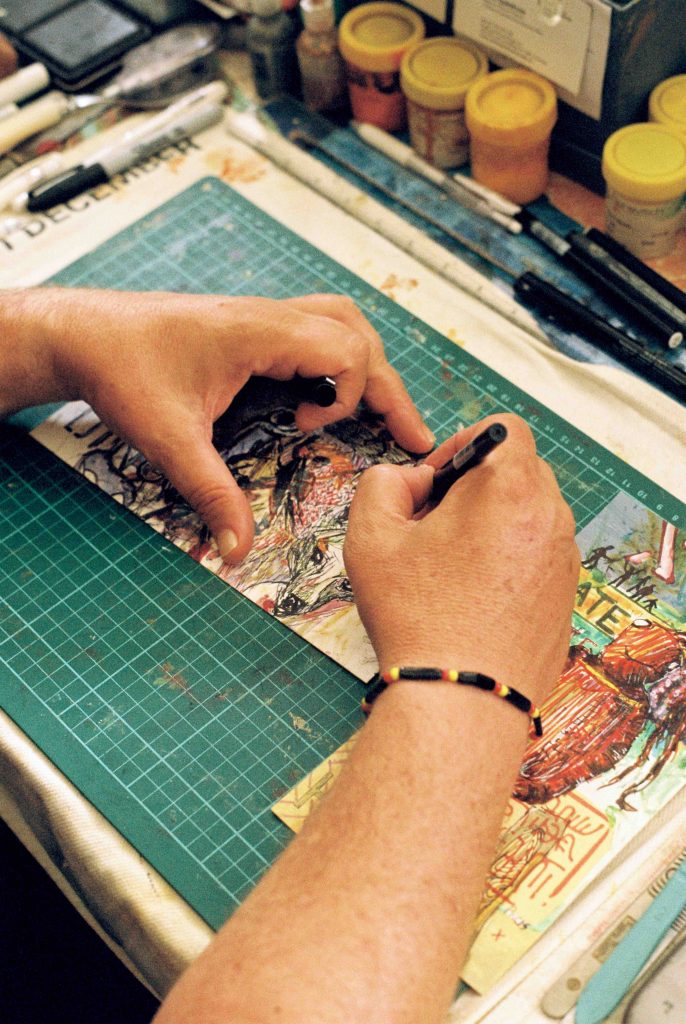
Image: Jade Florence
Tracing the history of queer mob is a job that needs to be done, but I just don’t have the energy for it anymore. We didn’t have art in the same way we have it now. Culture and cultural belongings were art. Morals and stories were told through dance and rock art, and it’s harder to scratch out, but we know we were there.
The sistergirls have been on the Tiwi Islands for generations, for example, and now there’s a Facebook group for brotherboys and sistergirls that’s reaching lots of people. It’s great to see technology being used in ways that connect Aboriginal people instead of divide us.
I‘ve struggled with labels because the art world and the world in general can try to compress you into a monoculture and homogenise your diversity.
I’m minoritised in the white art world and minoritised in the queer community, and you just end up as the minority in the minority. Sometimes we do it to ourselves, and some of that is about not bringing more shame onto your people – for Aboriginal people especially.
Art’s nice because you can hide away in it. I’ve got a collaboration coming up with Maree Clarke, a possum skin maker, and we’re working together to try to queer the possum cloak up – to reimagine what a queer elder would look like. It’s hard for Aboriginal people to do it all alone. Collaborations are important, especially for mob; that’s just the way we work.
In my art, I’ve always tried to push the boundaries of what an Aboriginal artist does. I use the symbol of the dingo, or the outsider, a lot. I love native dogs, and it feels like the dingo has become my personal totem because it’s hunted and baited and misunderstood and seen with such menace. It’s only protected in certain parts of the country because it gets in the way of farming, which is ongoing colonisation.
We’ve got so much working against us: self-proclaimed representatives of community like Mundine, whiteness, ongoing colonisation. Being Aboriginal is political. As I’ve gotten older, I’ve realised that it’s my duty to speak up. My voice needs to be heard.
As told to Bobuq Sayed.
This article originally appeared in Archer Magazine #10, the HISTORY issue. SUBSCRIBE TO ARCHER MAGAZINE




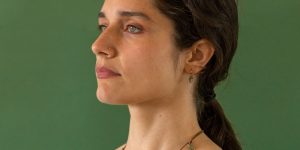
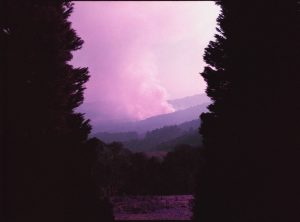

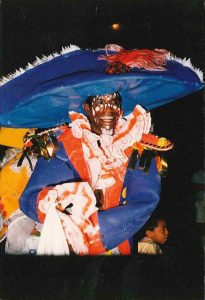
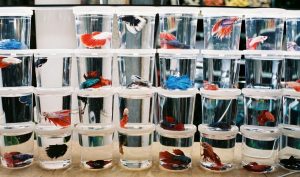
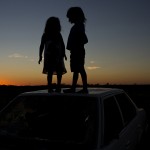




Wonderful to see how you’re going Peter. A wonderful and insightful piece reflecting why I and many others hold you in high esteem. Much respect.
Outstanding truth spoken. Takes courage and resilence and turns a negative into something far more powerful. Miigwetch from my tribe to yours. ❤️